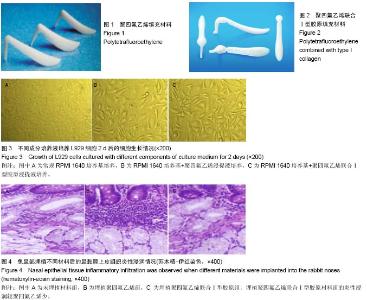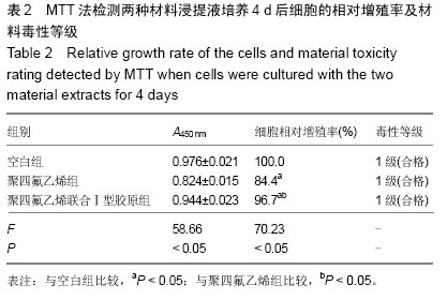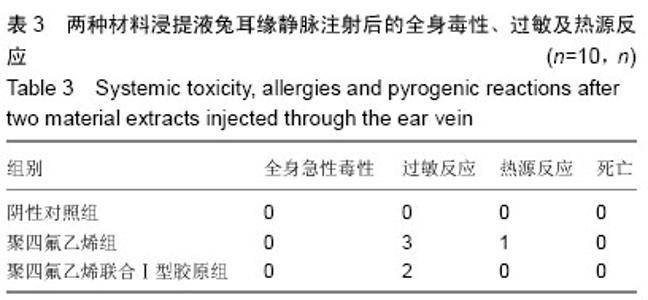| [1] Planas J.The use of Integra™ in rhinoplasty.Aesthetic Plast Surg.2011; 35(1):5-12.
[2] Alves LB,Mariguela VC,Grisi MF,et al.Expression of osteoblastic phenotype in periodontal ligament fibroblasts cultured in three-dimensional collagengel. J Appl Oral Sci. 2015;23(2):206-214.
[3] Sassani SG,Kakisis J,Tsangaris S,et al.Layer-dependent wall properties of abdominal aortic aneurysms: Experimental study and material characterization. J Mech Behav Biomed Mater. 2015;49:141-161.
[4] Gan TT,Zhang YJ,Zhao NJ,et al.The study of selecting sample detecting position and lead plate inner material in thin film method X-ray fluorescence measurement. Guang Pu Xue Yu Guang Pu Fen Xi.2015;35(1):252-257.
[5] Zhong M,Chen T,Hu C,et al.Isolation and Characterization of Collagen from the Body Wall of Sea Cucumber Stichopus monotuberculatus.J Food Sci.2015;80(4):C671-679.
[6] Le Vu P,Takatori R,Iwamoto T,et al.Effects of Food-Derived Collagen Peptides on the Expression of Keratin and Keratin-Associated Protein Genes in the Mouse Skin. Skin Pharmacol Physiol.2015;28(5):227-235.
[7] Jeong YJ,Shin JM,Bae YS,et al.Melittin has a chondroprotective effect by inhibiting MMP-1 and MMP-8 expressions via blocking NF-κB and AP-1 signaling pathway in chondrocytes.Int Immunopharmacol.2015;25(2):400-405.
[8] Iinuma S,Aikawa E,Tamai K,et al.Transplanted bone marrow-derived circulating PDGFRα+ cells restore type VII collagen in recessive dystrophic epidermolysis bullosa mouse skin graft.J Immunol.2015;194(4):1996-2003.
[9] Zhou T,Wang N,Xue Y,et al.Development of biomimetic tilapia collagen nanofibers for skin regeneration through inducing keratinocytes differentiation and collagen synthesis of dermal fibroblasts.ACS Appl Mater Interfaces.2015;7(5): 3253-3262.
[10] Shimizu J,Asami N,Kataoka A,et al.Oral collagen-derived dipeptides, prolyl-hydroxyproline and hydroxyprolyl-glycine, ameliorate skin barrier dysfunction and alter gene expression profiles in the skin.Biochem Biophys Res Commun.2015; 456(2): 626-630.
[11] Guo L,Harnedy PA,O'Keeffe MB,et al. Fractionation and identification of Alaska pollock skin collagen-derived mineral chelating peptides. Food Chem.2015; 173:536-542.
[12] Kim MS,Park EJ,Na DH.Synthesis and characterization of monodisperse poly(ethylene glycol)-conjugated collagen pentapeptides with collagen biosynthesis-stimulating activity.Bioorg Med Chem Lett.2015;25(1):38-42.
[13] Hamaya R,Ono Y,Chida Y,et al.Polytetrafluoroethylene fume-induced pulmonary edema: a case report and review of the literature.J Med Case Rep.2015;9(1):111.
[14] Gião MS,Blanc S,Porta S,et al.Improved recovery of Listeria monocytogenes from stainless steel and polytetrafluoroethylene surfaces using air/water ablation. J Appl Microbiol.2015; 119(1):253-262.
[15] Sgroi MD,Kirkpatrick VE,Resnick KA,et al.Less Than Total Excision of Infected Prosthetic PTFE Graft Does Not Increase the Risk of Reinfection.Vasc Endovascular Surg.2015;49(1-2): 12-15.
[16] Borrasca AG,Aranega AM,Filho OM,et al.Bone repair of surgical defects filled with autogenous bone and covered with demineralized bone matrix membrane or polytetrafluoroethylene membrane in rats.Int J Oral Maxillofac Implants.2015; 30(2):442- 449.
[17] Kahraman A,Kahveci R.Evaluating the effect of polytetrafluoroethylene and extractum cepae-heparin-allantoin gel in peripheral nerve injuries in a rat model. Plast Surg (Oakv). 2015;23(1):9-14.
[18] Mese B,Bozoglan O,Elveren S,et al.Efficacy of linezolid, teicoplanin, and vancomycin in prevention of an experimental polytetrafluoroethylene graft infection model caused by methicillin-resistant Staphylococcus aureus. Med Sci Monit. 2015; 21:909-914.
[19] Bercu ZL,Fischman AM,Kim E,et al.TIPS for refractory ascites: a 6-year single-center experience with expanded polytetrafluoroethylene-covered stent-grafts. AJR Am J Roentgenol.2015;204(3):654-661.
[20] Mangukia CV,Agarwal S,Satyarthy S,et al.Management of iatrogenic RV injury-RV packing and CPB through PTFE graft attached to femoral artery.Ann Pediatr Cardiol.2015;8(1): 53-55.
[21] Yang P,Yang Q,Liu T,et al.A modified technique for expanded polytetrafluoroethylene shaping in chin augmentation: parallel groove carving technique.J Craniofac Surg.2015;26(2): e146- 148.
[22] Quintessenza JA.Polytetrafluoroethylene pulmonary valve conduit implantation for chronic pulmonary insufficiency. Cardiol Young.2014;24(6):1101-1103.
[23] Huang H,Kitano K,Nagayama K,et al.Results of bony chest wall reconstruction with expanded polytetrafluoroethylene soft tissue patch. Ann Thorac Cardiovasc Surg.2015; 21(2):119-124.
[24] Roy AK,Dendooven J,Deduytsche D,et al.Plasma-enhanced atomic layer deposition: a gas-phase route to hydrophilic, glueable polytetrafluoroethylene.Chem Commun (Camb). 2015; 51(17):3556-3558.
[25] Heo SH,Park YJ,Woo SY,et al.Comparison of long-term results of above-the-knee femoro-popliteal bypass with autogenous vein andpolytetrafluoroethylene grafts. Ann Surg Treat Res.2015;88(1):28-34.
[26] Schlummer M,Sölch C,Meisel T,et al.Emission of perfluoroalkyl carboxylic acids (PFCA) from heated surfaces made of polytetrafluoroethylene (PTFE) applied in food contact materials and consumer products.Chemosphere. 2015;129:46-53.
[27] Rizvi A,Chu RK,Lee JH,et al.Superhydrophobic and oleophilic open-cell foams from fibrillar blends of polypropylene andpolytetrafluoroethylene.ACS Appl Mater Interfaces.2014; 6(23):21131-21140.
[28] Ramos SM,Dias JF,Canut B.Drop evaporation on superhydrophobic PTFE surfaces driven by contact line dynamics. J Colloid Interface Sci.2015;440:133-139.
[29] Zurera LJ,Espejo JJ,Lombardo S,et al.Safety and efficacy of expanded polytetrafluoroethylene-covered transjugular intrahepatic portosystemic shunts in children with acute or recurring upper gastrointestinal bleeding.Pediatr Radiol.2015; 45(3):422-429.
[30] Yonezu A,Iio S,Itonaga T,et al.Tensile deformation of polytetrafluoroethylene hollow fiber membranes used for water purification. Water Sci Technol.2014;70(7):1244-1250. |







